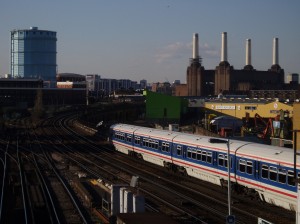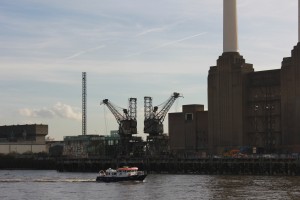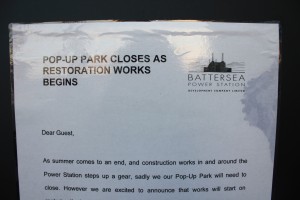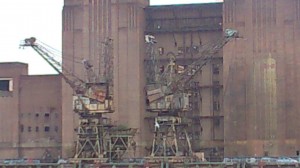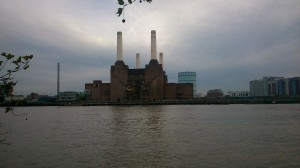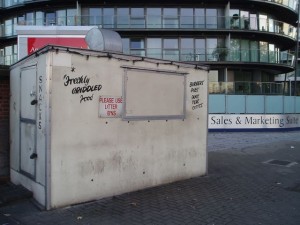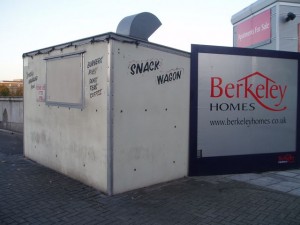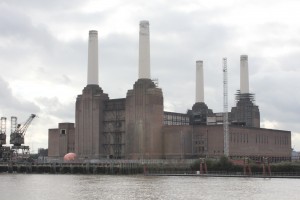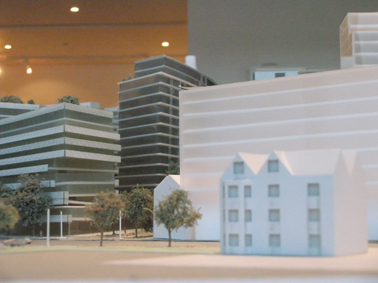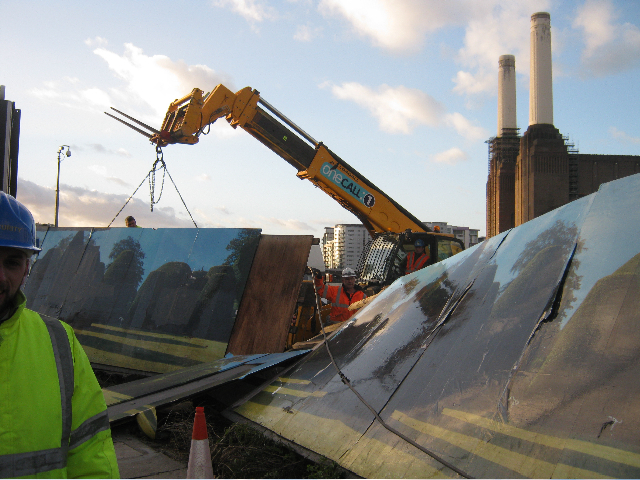The new owners of Battersea Power Station may not know much about property development, but they do have excellent PR. The hugely successful Open House London day attracted tens of thousands of visitors who queued for hours to catch a brief glimpse of this much loved building.
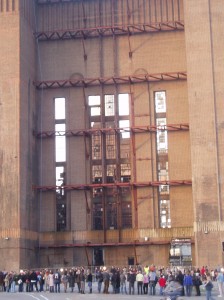
However, in PR terms, it was a bit of an own goal. As only a few days later, the World Monuments Fund listed Battersea Power Station as an endangered world heritage site. See our blog on this.
This very significant listing was hardly commented on in the media. Despite its big PR it was’nt even mentioned in the very slick newsletter of the owners. The inclusion was only visible in some mainstream media:
”Battersea Power Station ‘at risk’ says the heading of an article in the Times. And according to the the Express:
”The Grade II listed London landmark is among 67 heritage
sites that are at risk from natural, economic, social and political forces according to The World Monuments Fund (WMF). The decommissioned coal-fired power station was joined on the list by the beautiful Italian city of Venice and the little known Hong Kong village of Pokfulam.”
The Local Guardian on the inclusion:
”WMF have said they aim to keep a spotlight on the current redevelopment plans for the station, particularly focusing on the re-building of it’s four chimneys.”
Noticeably, they claim it to be one of the best-loved landmarks of the capital.
The Evening standard did not mention this embarassing listing either. Since they recently made Battersea Power Station a front cover image as part of their association with “The Power 1000 – London’s most Influential People” critical reporting of Battersea Power Station from the Standard, which was always weak, has been significantly lacking.
See our full article about the owners’ pro – active approach to media management.
Interestingly, the owners were unable to provide visitors with updated information about the new phasing of the demolishing of the chimneys. This was left to a small group of local volunteers of the Battersea Power Station Community Group.
Watch our video about the demonstration against these plans during London open house.
The owners have also not mentioned their plans to make a bio fuel power station. If you think bio fuels sounds good, look at this chart. And then there’s the PR problem with main partner Sime Darby’s significant role in deforestation and the extinction of the Orang u Tang.
Despite these obstacles, they are still winning the PR – war as many people believe they are going to start to renovate the Power Station “at last”. However, phase 1 is only building ugly greedy soulless flats for investors that will block most of the views. And phase 2 involves demolishing the chimneys and, they claim, replacing them with replicas.
The current agreement is that they have permission to take down one, and that is including the art deco brickwork on the top. They will rebuild the first one to 25 meters, which is about halfway. When they have reached that point, they can take the other three chimneys down and then they will continue rebuilding the first.
So it’s essentially one plus three. Now at some point down that route, if there’s a default, the developer either refuses, or claim they ‘cannot put them back up’ or they run out of money, the chimneys, like the roof, will not be put back. The cost of putting back three and a half chimneys is massive- far more than the “bond” being asked.
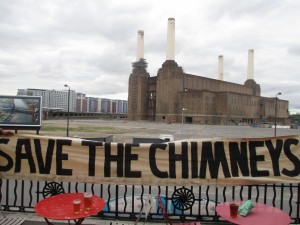
They are also not keen to draw attention to their recent request to dismantle the two listed cranes that are disgracefully being allowed to rust away, in order to provide a jetty for taking underground extension tunnel soil out via the river. They have a very long water front it is typical that they should insist it can only work by demolishing the cranes.
To us and any one interested, except English Heritage and Wandsworth council who collude in the hidden master plan, the owners are pursuing a policy of demolition by stealth.
Click Battersea Power Station for more blogs
See our Battersea Power Station project pages for more information and videos.
Or visit PlanA our general blog on urbanism, planning and architecture.
Spectacle homepage
Like Spectacle Documentaries on Facebook
Follow SpectacleMedia on Twitter


